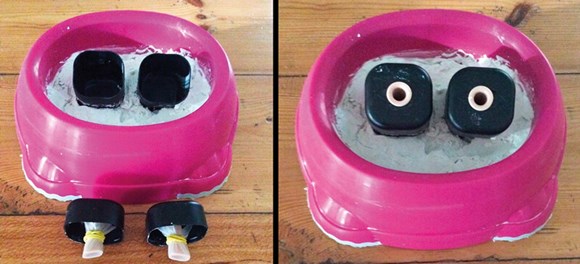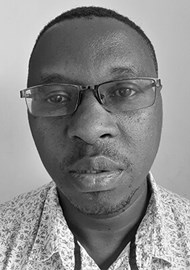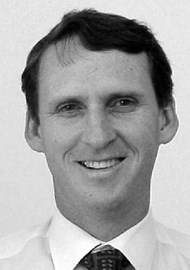How can ear and hearing care be addressed in a setting with limited resources? Wakisa Mulwafu, Chris Prescott and Johan Fagan present an innovative model for training ear surgery technicians to perform endoscopic myringoplasty under local anaesthesia on a large scale in Malawi.
There are about 50 million perforated eardrums in Africa – a figure based on the World Health Organisation (WHO) estimate of 4% of the population suffering from chronic ear disease [1]. Yet a survey of ENT and audiology services in Sub-Saharan Africa (SSA) showed a severe shortage of ENT, audiology, and speech therapy services and training opportunities in SSA and a lack of progress between 2009 and 2015, due in part, to rapid population growth [2].
Many countries in SSA rely on midlevel healthcare workers called clinical officers to provide orthopaedic, anaesthesia, and obstetric services, including caesarian sections. Clinical officers have also been trained to do cataract operations. This is not unlike the situation in the USA where nurse anaesthetists are the main providers of anaesthesia in rural and medically underserved regions, and in the Armed Forces.
Should we therefore not be training midlevel healthcare workers to assess patients with perforated eardrums and to perform myringoplasties to address the problem of 50 million perforated eardrums in Africa as well as in other developing countries?
“The delivery of clinical services in Malawi is heavily dependent on medical assistants and clinical officers who play a central role at every level of medical facility”
Malawian experience of task sharing for ear and hearing care
With only two resident otolaryngologists for its population of about 19m, Malawi has introduced several initiatives to improve access to ear and hearing care for its extremely underserviced population. One such initiative is task sharing i.e. clinical services that would normally be provided by doctors, ENT specialists and audiologists, now being delivered by health surveillance assistants (Malawi’s Community Health Workers) and mid-level health workers including ear nose and throat (ENT) clinical officers, and audiology clinical officers.
Health surveillance assistants and clinical officers
Health surveillance assistants work in their communities to identify people with ear and hearing problems. Each health surveillance assistant serves a catchment population of 1000 people.
Medical Assistants undergo three years of training after leaving high school and are awarded a Diploma in Clinical Medicine. They deliver medical services at a secondary healthcare level. Some receive additional training in a limited field to become clinical officers specialising in ENT, ophthalmology, orthopaedics or anaesthesia. Most caesarean sections at district hospitals are done by obstetric clinical officers. The delivery of clinical services in Malawi is heavily dependent on medical assistants and clinical officers who play a central role at every level of medical facility, from health centres to central hospitals.
ENT and audiology clinical officers
A training programme for ENT clinical officers was introduced by the first author (WM) in 2010 to expand the otolaryngology workforce in a relatively short period. In addition to their three years of training as medical assistants, ENT clinical officers receive 18 months of ENT training and are awarded a diploma in ENT. The training modules for the diploma include basic principles and procedures of ENT patient care, ENT pharmacotherapeutics, ENT conditions and diseases, clinical audiology and community ENT [3]. Some have received additional training to enable them to undertake minor ENT surgery. Forty-two ENT clinical officers and four audiology clinical officers have been trained and deliver ear and hearing services at district and central hospitals. All have now been equipped with basic equipment to enable service delivery.
“Even though only 46/83 patients returned for follow-up at three months, grafts were intact in 44/46 (96%) of ears”
ENT clinical officers and endoscopic myringoplasty
Clinical officers who perform the bulk of emergency obstetric operations at district hospitals in Malawi have comparable postoperative outcomes to those of medical officers [4]. So why, with the recent introduction and rising popularity of endoscopic ear surgery (EES), should ENT clinical officers not be trained to perform endoscopic myringoplasty?
Endoscopic myringoplasty is well suited to being undertaken by midlevel healthcare workers as the diagnosis of a perforation is straightforward, the indications for myringoplasty are simple (predominantly in Africa, recurrent otorrhoea but additionally clinically significant conductive hearing loss), and cholesteatoma (not common in most parts of Africa) can be excluded by endoscopic inspection. An endoscope costs a fraction of an operating microscope and is far more easily transportable. Mobile camera, light source and screen units cost only $1-2000. Only a few basic instruments are required, and consumables are minimal.
A few Malawian ENT clinical officers were formally trained to do endoscopic myringoplasties during an ‘ENT week’ with the assistance of visiting ENT surgeons from Bradford and Leicester in November 2016. They continued to be supervised by the first author.
Mulwafu and Fagan recently published the Malawian experience of endoscopic myringoplasty performed by clinical officers [5]. Eighty-three patients underwent endoscopic myringoplasty at Queen Elizabeth Central Hospital (QECH) in Blantyre, Malawi, between March 2017 and February 2018. There were 43 females (52%) and 40 males (48%). The mean age of patients was 24 years (SD=13.9) and ages ranged between eight and 65 years. Patients were consecutively included in the study. Tragal cartilage-perichondrium was used in all cases, and the surgery was done under general anaesthesia. Table 1 summarises who the surgery was performed by.
Table 1. Cadre that performed endoscopic myringoplasty.
Surgeon: ENT Clinical Officer Perforations (%): 60 (72%)
Surgeon: Medical Officer Perforations (%): 5 (6%)
Surgeon: Assisted by ENT specialist Perforations (%): 14 (17%)
Surgeon: Specialist only Perforations (%): 4 (5%)
Total perforations: 83
Even though only 46/83 patients returned for follow-up at three months, grafts were intact in 44/46 (96%) of ears. In patients operated on by clinical officers, 30/60 patients attended follow-up with grafts intact in 29/30 (97%) of ears at three months. Due to this poor follow-up, it is not really possible to provide an accurate picture for success, but even if all grafts in the non-attenders had failed this would still represent a 50% success rate (which extrapolates to 25 million ears ‘cured’ in Africa!!)

Figure 1. Grommet Trainers.
A recent endoscopic ear surgery course was undertaken in Malawi to assess feasibility of such training in resource- challenged countries. Participants were ENT specialists and ENT trainees from the region who had only ever used microscopes for ear surgery. Equipment was minimal and the practice material was ‘Grommet Trainers’ (see Figure 1), cadaver temporal bones and goats’ ears (for cartilage graft harvesting). All participants felt that endoscopic ear surgery was easier to master than microscopic surgery and that the display of the deep ear canal and tympanic membrane was far superior. Although they practise more complex ear surgery, they felt that training for basic myringoplasty surgery was feasible for ‘technicians’ with basic otological knowledge and examination skills.
Recommendations
This Malawian experience clearly demonstrates that, with appropriate training, endoscopic myringoplasty is very well suited to being performed by midlevel healthcare workers. Perhaps we need to rethink our global strategy to address the problem of chronic ear disease and the associated conductive hearing loss due to tympanic membrane perforations. Perhaps we should be training and equipping a cadre of ‘ear surgery technicians’ to perform endoscopic myringoplasty under local anaesthesia on a large scale, similar to the services provided by ‘cataract surgery technicians’ and anaesthetic nurses, even in developed countries?
References
1. Prescott CAJ. Personal overview of otology in Africa. Int J Pediatr Otorhinolaryngol 2018;112:193-4.
2. Mulwafu W, Ensink R, Kuper H, Fagan J. Survey of ENT services in sub-Saharan Africa: little progress between 2009 and 2015. Glob Health Action 2017;10(1):1289736.
3. Mulwafu W, Nyirenda TE, Fagan JJ, et al. Initiating and developing clinical services, training and research in a low resource setting: the Malawi ENT experience. Trop Doct 2014;44(3):135-9.
4. Chilopora G, Pereira C, Kamwendo F, et al. Postoperative outcome of caesarean sections and other major emergency obstetric surgery by clinical officers and medical officers in Malawi. Malawi Med J 2016;28(3):94‑8.
5. Mulwafu W, Fagan JJ. Improving access to hearing care services and professionals in Africa through task sharing: The Malawian experience. East Cent Afr J Surg 2019;24(1):78-81.






